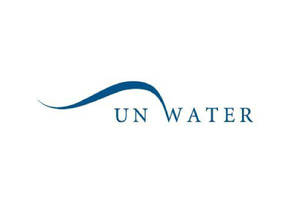Water and Sustainable Development: From Vision to Action
 Outline for a Session in the Academic Stream:
Outline for a Session in the Academic Stream:
- Means of implementation to deal with risks
- Sustainable Development Goals and Risk Management
With the adoption of the SDGs the global development and environmental governance agenda will enter a new era. The SDGs have the ambitious goal to guide a sustainable development of the planet, sustainable embracing economic, social and environmental dimensions. In particular the sustainability of the environment which has been largely neglected in the MDGs is an issue if major concern. UN-Water has put forward priorities for an SDG dedicated to water.
Major topics addressed are:
- WASH to be continued;
- Sustainable development of the resource which embraces as well sustainability of the natural environment;
- Compliance with good governance principles and implementation of improved governance systems;
- Abate water pollution; and
- Protect from water related disasters.
The SDGs (currently 17) are formulated as individual goals but essentially they are not independent and their implementation requires coordinated. One example is given by the Water-Energy-Food Nexus. Policies in one domain have negative impacts on the other. Support for renewable energy production and biofuels leads to changes in land use patterns which may negatively affect food production, the quantity and quality of water resources and livelihoods of marginalized groups. There is an urgent need for implementing comprehensive risk assessments of policies in the different domains.
Need for action related to dealing with risks in the context of the implementation of the SDGs:
- More attention needs to be devoted to systemic and emerging risks;
- Integrated and adaptive risk governance required to deal with interconnectedness;
- Adaptive and integrated risk assessment and management needed;
- Early warning signals – appropriate monitoring systems to be put in place; and
- Multi-level approaches – how to govern risks at which level
Innovation required in risk governance and management
Managing for increased water security has always been about reducing risks. Managing water related risks has a long and successful engineering tradition in industrialized countries. Health and hygiene problems within cities and the seemingly insatiable demand for more water drove major efforts in urban water management to ensure reliable supply of clean water and to implement waste water treatment facilities. Rivers were controlled to protect cities and dryland agriculture from flooding. The reigning paradigm was safety first which led to an approach keeping risks within tolerable and controllable limits thereby often ignoring implications for the environment (Gleick 2003, Pahl-Wostl, Jeffrey et al. 2011). However, the strategy of reducing the probability of flooding events to occur reduces only one of the two factors affecting flood risk. The other factor, potential damage in case of a flooding event, has even increased since more and more assets are placed in floodplains (Pahl-Wostl, Jeffrey et al. 2011). Management approaches which rely on the ability to predict the key factors of influence and their uncertainty bounds are inappropriate for dealing with complex systemic risks under changing and increasingly uncertain contextual conditions.
Many water security problems qualify as systemic risks which defy simple solutions. Systemic risks arise from potentially harmful interdependencies within and between systems and are a threat to systems as a whole up to the potential consequence of breakdown. Presumably water security problems have never been simple and some of the technical, one-dimensional approaches of dealing with them have always been inappropriate. However, one needs also to recognize that our societies have become increasingly more complex and interconnected within and across countries (Pahl-Wostl 2007). Dealing with such complexity and resulting uncertainties requires rethinking and innovation in policy and management. Increased recognition for combined uncertainties and potentially unmanageable risks have led the Netherlands to a radical shift in flood policy and management, from ‘control water’ to ‘living with water’ (Huitema and Meijerink 2009, Kimmelman 2013, Pahl-Wostl, Becker et al. 2013).
Prevailing water governance systems still reflect that legacy of a command and control paradigm. The deficits of risk governance listed in Box 2 are as well of concern for dealing with risks related to water security. The analysis notes for example gaps regarding an appropriate assessment of which risks are acceptable to society and to take into account stakeholder risk perceptions. In water management what is acceptable for society has mainly been determined by expert judgement and technical safety standards (e.g. flood protection). Moving towards more integrated approaches requires innovative ways of engaging stakeholders which is recognized in principle but is still fraught with difficulties in a field or practice which has for such a long time been dominated by technical experts and technical knowledge (Pahl-Wostl, Becker et al. 2013). This may be related to other deficits identified, an over-reliance on formal models and a lack of acknowledgement that understanding and assessing risks is not a neat, controllable process. Such deficits in understanding and assessing risks may translate in deficits in managing risks. This includes poorly managed processes of decision making lacking transparency, confidentiality and mechanisms to deal with conflicts (Mostert, Pahl-Wostl et al. 2007). Complexity and unintended consequences may not be given sufficient attention and the need to establish response capacity might be neglected.